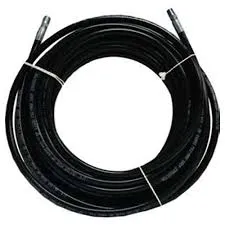Difference Between R134 and R134A - Complete Guide
The Difference Between R134 and R134a
Refrigerants play a crucial role in cooling systems, and understanding their variations is vital for HVAC professionals and consumers alike. One common point of confusion arises between R134 and R134a. While they may sound similar, they are distinctly different chemicals with unique properties and applications.
The Difference Between R134 and R134a
R134a is a hydrofluorocarbon (HFC) that became the standard refrigerant for automotive and household air conditioning systems in the 1990s. It was developed as an environmentally friendly alternative to the previously used chlorofluorocarbon (CFC) refrigerants, which were known to deplete the ozone layer. R134a has a lower ozone depletion potential (ODP) compared to CFCs, making it a more sustainable choice. Additionally, R134a contains no chlorine atoms, which is a significant factor in its reduced environmental impact.
what is the difference between r134 and r134a

When comparing the two, it’s important to note that R134 (the generic reference) is often used to describe the compound R134a. Therefore, in many contexts, the reference to R134 may imply R134a, though technically, they are not interchangeable. In practical applications, R134a is the substance utilized in refrigeration systems, while R134 might be a shorthand that some people use incorrectly.
Furthermore, R134a is characterized by its thermodynamic properties, such as its efficiency in heat transfer and low flammability, which contribute to its popularity. It has a boiling point of about -26.3°C (-15.3°F) and is generally non-toxic, making it a safe option for various cooling applications.
Despite its advantages, concerns about global warming potential (GWP) have led to the search for alternative refrigerants. R134a has a relatively high GWP, which has prompted regulatory bodies to consider phasedowns in favor of newer substances that are even less environmentally impactful. This shift is essential in addressing climate change, and many manufacturers have already begun transitioning to lower-GWP alternatives.
In conclusion, while R134 and R134a are often mentioned in the same breath, it is essential to understand that R134a is the correct refrigerant used in most air conditioning systems today. As discussions around environmental regulations continue, staying informed about the various refrigerants available, their properties, and their impacts on our planet will remain crucial for making responsible choices in cooling technologies. Knowing the difference between R134 and R134a equips both professionals and consumers to engage thoughtfully in conversations about refrigerants and their environmental significance.
-
Ultimate Spiral Protection for Hoses & CablesNewsJun.26,2025
-
The Ultimate Quick-Connect Solutions for Every NeedNewsJun.26,2025
-
SAE J1401 Brake Hose: Reliable Choice for Safe BrakingNewsJun.26,2025
-
Reliable J2064 A/C Hoses for Real-World Cooling NeedsNewsJun.26,2025
-
Heavy-Duty Sewer Jetting Hoses Built to LastNewsJun.26,2025
-
Fix Power Steering Tube Leaks Fast – Durable & Affordable SolutionNewsJun.26,2025

